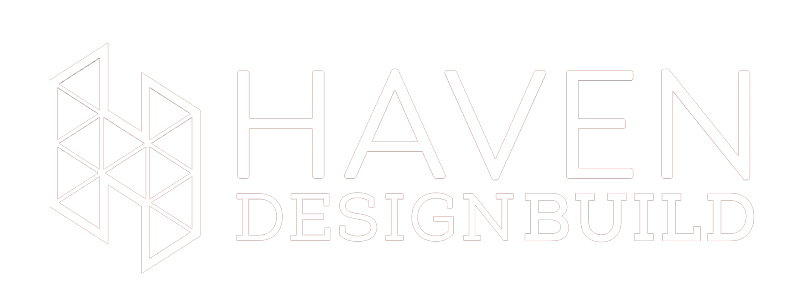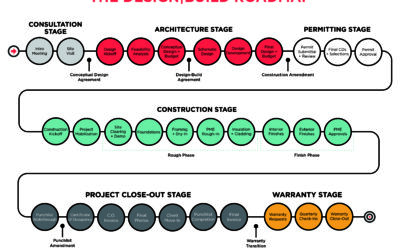What is an ADU or Accessory Dwelling Unit?
An accessory dwelling unit, or ADU, is a housing unit (similar to an apartment unit) that is secondary to and separated from a primary home. An ADU can be a space within the primary home, it can be attached to the main structure, or can be completely separated as its own structure. Other names for ADUs include; granny flat, in-law-suite, garage apartment, laneway house, alley house, and backyard cottage.
ADUs can be utilized for a variety of purposes – In-law suite for a multi-generational household. Investment short-term (i.e. AirBNB) or long-term (lease) rental for homeowners. Dedicated affordable housing unit for interested citizens. Affordable student housing options near campus.
What is an Accessory Building/Structure?
An accessory structure is a separate structure that exists on the same parcel of land as a primary structure. Accessory structures are typically permitted on residential and non-residential properties. There can be many types of accessory structures, such as separated garages or sheds, but an ADU can also be an accessory structure if it is not attached to the main home.
What is the difference between an Accessory Dwelling and an Accessory Building?
The primary feature that distinguishes an accessory dwelling unit from other accessory buildings is the presence of conditioned living areas and built-in or semi-permanent cooking facilities. Not all accessory structures can legally accommodate being occupied as a residence, unless converted to an ADU.
What laws exist for building ADUs?
A City’s Unified Development Ordinance (UDO) regulates the requirements of ADUs, as well as all other types of development in the City. These regulations include where an ADU can be placed, how large and tall it can be, and other physical characteristics of the structure.
The Residential Building Code regulates how the structure must perform; including structural requirements, energy performance, and many other aspects of the building.
There can also be other regulations such as historic neighborhood overlays and stormwater protection which must be considered on a site-by-site basis.
What site requirements exist for ADUs?
Found in the City’s Unified Development Ordinance (UDO), there are definitions for how ADUs can be placed on a site. Setbacks are dimensional limitations placed on a property, based on zoning district, which restrict the location of various development elements such as a single-family home, or accessory dwelling unit.
Typically, setbacks are from property lines, but can also be associated with things such as easements or structures. Setbacks are measured to the foundation of the structure, whereas other building elements (such as decks or overhangs) may have different restrictions. There may be further restrictions on location depending on zoning and type of primary structure. An ADU is also permitted to be attached or within the primary home or duplex.
What other requirements exist for ADUs?
In North Carolina a General Contractor is required on all jobs over $30,000, with an exemption for your personal property. Thus, so long as you live in the primary dwelling, you can GC your own ADU project, subject to some restrictions.
Separations between primary dwelling and ADUs can require a fire rated wall and floor/ceiling, which is an assembly designed to inhibit or prevent the spread of fire. They are sometimes required between different building occupancies.
Different municipalities have site development, site access, landscaping, stormwater management, and parking requirements for ADUs, which can be found in their Development Ordinances.
How do I finance an ADU?
Currently, financing options for ADU’s are relatively limited. Homeowners typically either self-finance (cash, savings, friends/family) or receive finances based on the equity in their home. There are three primary loan programs related to home equity.
- Home Equity Line of Credit (HELOC).
- Home Equity Installment Loan (HEIL)
- Cash Out Refinancing
Each option has a variety of benefits and drawbacks, and homeowners should discuss the details of their situation with a financial institution.
If a homeowner does not have the ability to self-finance nor has the equity in their home necessary to build an ADU, their options are limited as lenders are not broadly experienced or interested in underwriting ADU’s. Additionally, a developer or builder of ADUs may consider custom financing options with specific homeowners.
How do I get a permit for an ADU?
For permits, you will typically need to submit construction drawings to the governing municipality which include floor plans, elevations, structural design, and a surveyed site plan. Municipalities often have a checklist of the required documentation and data needed to successfully obtain a permit. Typical construction drawings also include electrical layout and system details such as plumbing fixtures and HVAC equipment. Construction drawings for permits are typically created by an architect or designer, sometimes with the support of structural engineers depending on the complexity of the structure.
Permitting requires the payment of fees, which vary by municipality, but can include utility hookups, stormwater impact fees, plan review fees, among others.



